November 2018
Compelled to Resign: The Story Of Commander Paul Hugill Hirst RAN 1899-1963
by Lieutenant Commander Terry Feltham RAN Ret’d
“Just because something ends doesn’t mean it never should’ve been. Remember, you lived, you learned, you grew and you moved on”. Anon.
Why this topic?
The recent discovery within the Society’s archives of an undated letter from Signalman Donald Fraser, commissioning member of HMAS Toowoomba1 led to my researching the reasons for the resignation in March 1942 of her Commanding Officer, LCDR Paul Hirst and the eventual dispersal of her entire crew.
The following are extracts from undated letter by Don Fraser:
After suffering heavy damage on the passage. Soon thereafter we were ordered back to sea. Our captain ‘Digger Hirst’ was loath to take Toowoomba to sea until major repairs were affected. Apparently Senior Naval Officer Western Australia, Commodore Collins, directed the skipper – ‘Take your ship to sea or resign’. ‘Digger’ advised the ship’s company, “I’ve resigned and I will be happy to get back to the spuds in Tasmania”. Under a new skipper we sailed to Adelaide for repairs. There, the entire crew received ‘individual draft notes’ sending them to all corners of the globe! Toowoomba then decommissioned, affected repairs and recommissioned. Did ‘Digger’ resign for nothing? Don Fraser.[i]
My First Impressions
Initially, there seemed little to this research task. Paul Hirst was a member of the 1913 Pioneer Class[ii] at The Naval College and HMAS Toowoomba 1 was Paul’s third command (following Tasmania and Success). Clearly, Commodore John Collins and The Naval Board held Paul in high regard. So, in my opinion, all that was required was for me to obtain copies of Toowoomba’s Reports of Proceedings from commissioning date in October 1941 to March 1942, seek out the Naval Board paperwork on the incident, the notes by Commodore Collins immediately before and after his decisions on the incident and access Paul Hirst’s personal reports and then write the story. ‘Wrong’. Despite considerable help from many people (most notably Vice Admiral Peter Jones) many cupboards were bare. However, sufficient veteran’s recollections are recorded to allow us the essentials of the story.
So I chose to go back to the early part of the 20th Century, research the history behind The Royal Australian Naval College and its Pioneer Class and build the story from that point.
The Royal Australian Navy and its Naval College
By the middle of the first decade of the 20th Century Vice Admiral Sir William Rooke Creswell, KCMG, KBE (‘The Father Of The Royal Australian Navy) along with Rear Admiral Frederick Tickell MID CMG RN and two very supportive Prime Ministers, Alfred Deakin and Andrew Fisher, had begun a concerted push to have our Navy (more a Colonial Force at the time) breakaway from The Admiralty. By late 1905 the Australian Commonwealth Naval Board was constituted in Melbourne, and it was clear that ‘The Royal Australian Navy’ (RAN) was close at hand.[iii]
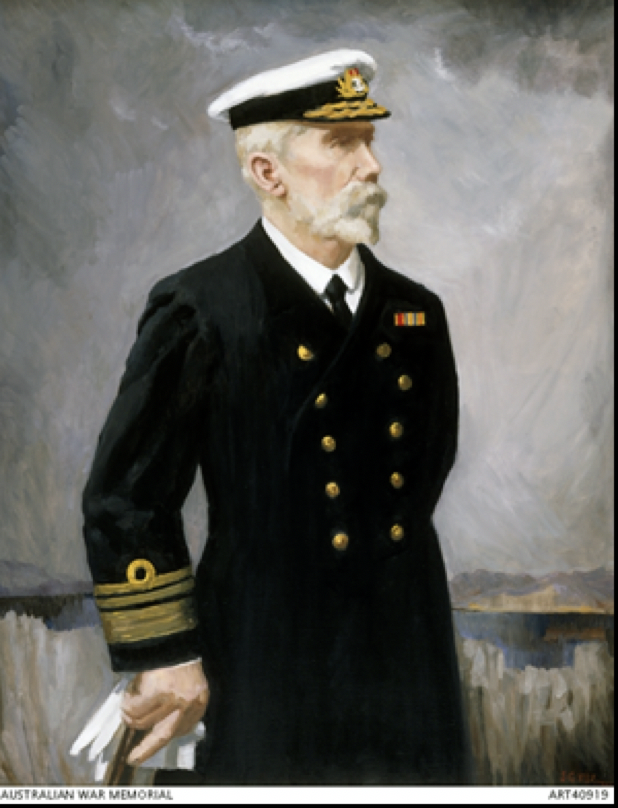

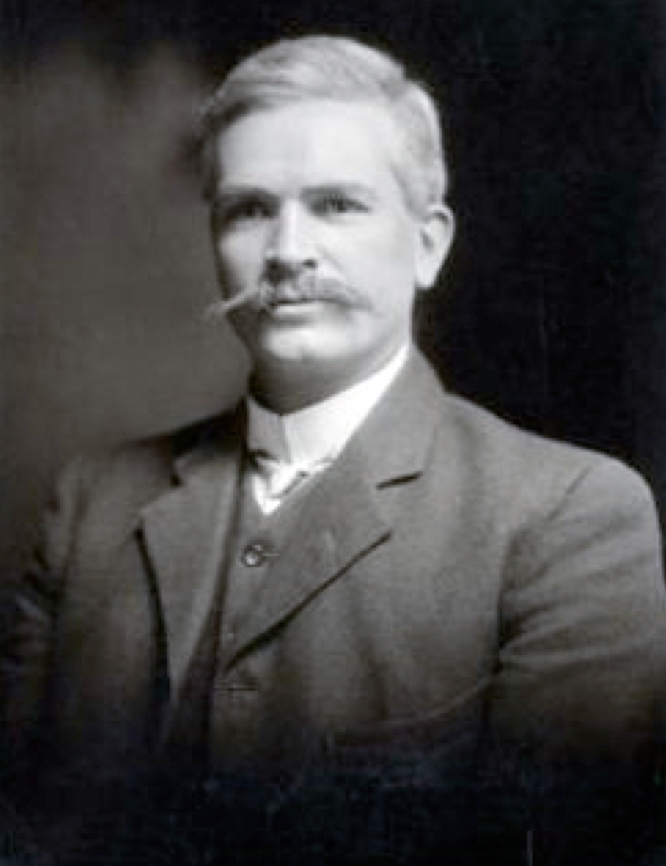
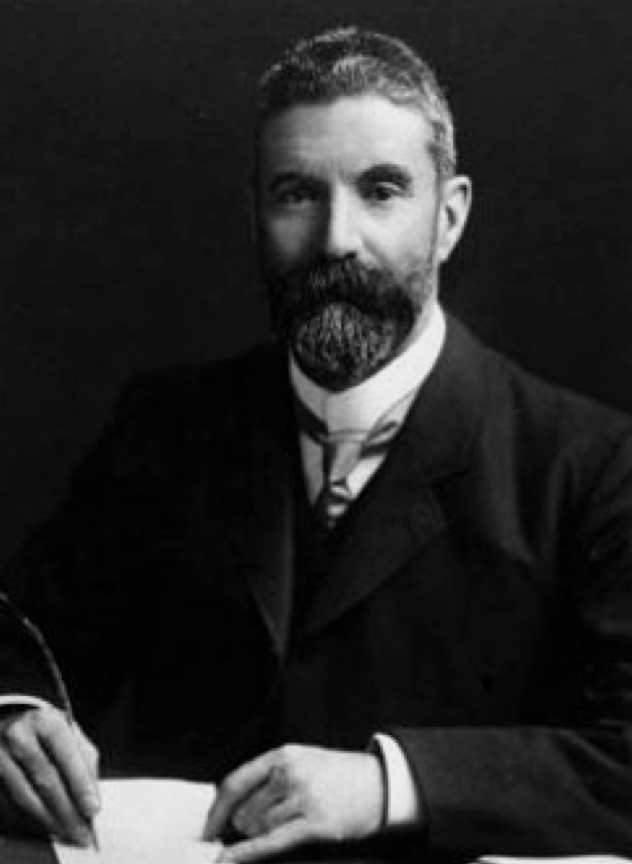
By 1911 many of Creswell’s capital initiatives for the RAN had been agreed and the Australian Government had also signed off on a major recruitment scheme for Australian Naval Officers, specifically:
An Australian Naval College (to be named HMAS Creswell on commissioning in January 1958) would be established at Jervis Bay by 1915. In the interim, young boys from all Australian states, and whose 13th birthday fell in the calendar year 1 January 1913 to 31 December 1913, would be invited to sit an exemplar exam in 1912 for entry to the Temporary Australian Naval College at Geelong in Victoria in 1913. Twenty eight Officer Cadets would be chosen to undergo a rigorous four year education, leadership, sporting and management program taking them to University entrance equivalent. On completion the successful graduates would join the Royal Australian Naval Officer Ranks as Midshipmen.[iv]
Creswell also made it clear to the Australian Government that he expected significant numbers of RN officers (including several of Flag Rank) would be required to fill positions in Australia’s naval command structure for the foreseeable future; probably until the early 1930s. He went further:
‘this fact does not worry me one iota as I am confident the Naval College structure agreed by the Australian Government, with its fine Executive, Educational, Engineering and Electrical training staff, would soon begin commissioning superb Australian Naval Officers’.[v]
Vice Admiral Peter Jones AO DSC RAN (Ret’d) in his book Australia’s Argonauts expresses best the sentiment of the time:
“For the nation, the calling for the first intake of Australia’s naval college was an important step in forging its own Navy. Yet, for twenty eight 13-year-old boys their decision would forever change their lives. Their careers would decisively shape the course of the Royal Australian Navy”.[vi]
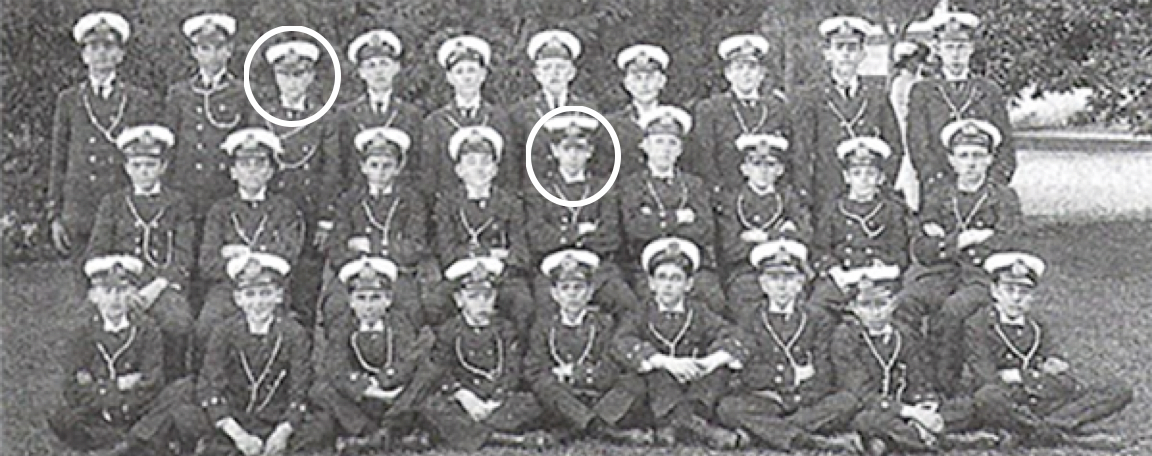
Paul Hirst, Back Row, circled. John Collins, Middle Row.
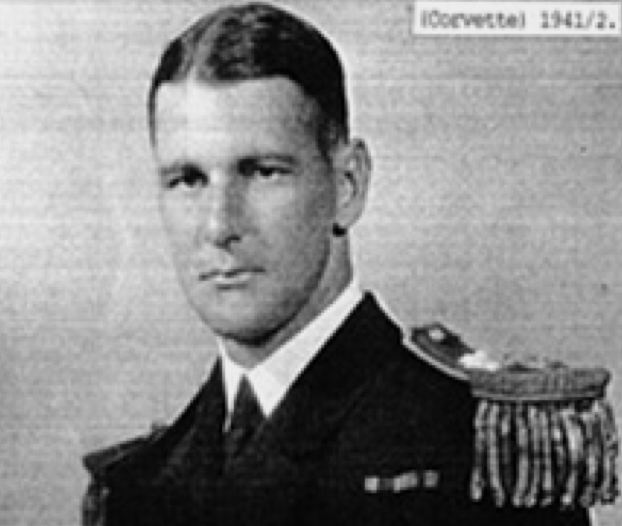
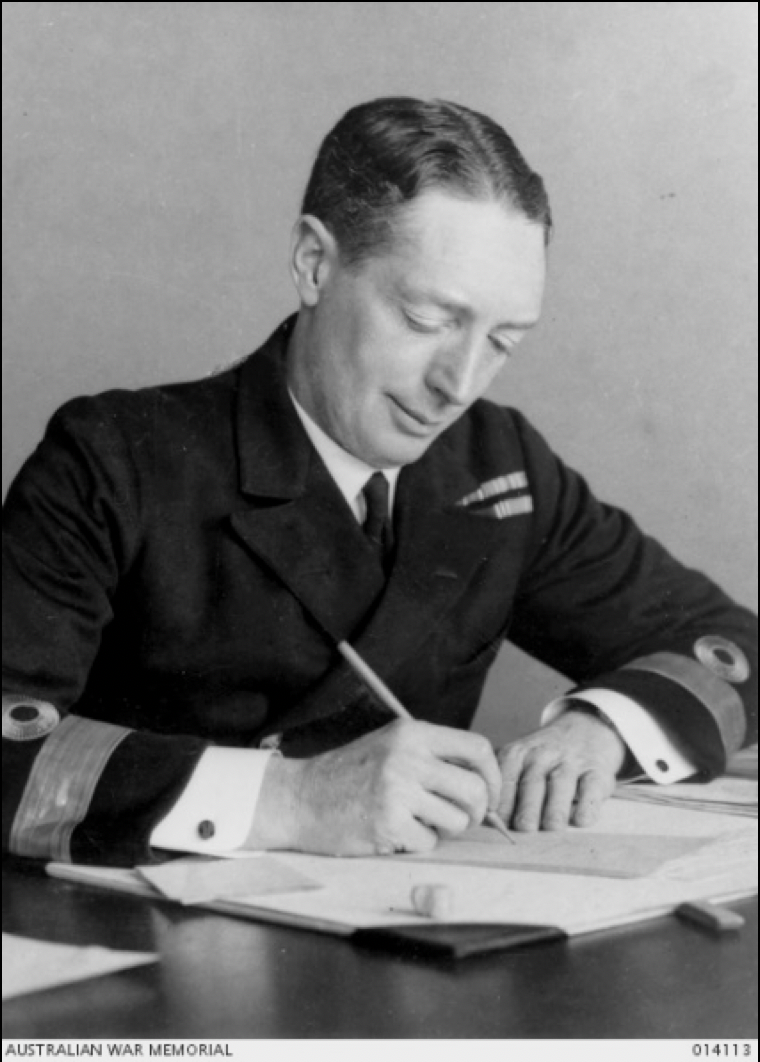
Members of the Pioneer Class[vii]
| Otto Edmund Albert;
George William Thomas Armitage; Joseph Burnett (later KIA when Commanding Officer [Captain RAN], HMAS Sydney); Norman Keith Calder; John Augustine Collins (later Vice Admiral Sir John, KBE CB, Chief of Naval Staff 1948-1955); Alfred Denis Conder; Ernest Semple ‘Dick’ Cunningham (lost in HM K17 in 1917); James Claude Durie Esdaile (the last surviving member of The Pioneer Class); Harold Bruce (Fearless Frank) Farncomb (later Rear Admiral – CB, DSO, MVO, MID (3) Navy Cross [US] and Commander of the Legion of Merit [US]); Eric Augustus Feldt (later OBE and Commander RAN – our greatest Coastwatcher); Frank Edmond Getting (later Captain RAN – KIA 1942 when in Command HMAS Canberra); |
Lloyd Falconer Gilling;
Paul Hugill Hirst (later Commander – 3 Commands – Tasmania, Success and Toowoomba); Elmer Benjamin Howells; Peyton James Kimlin; Frank Lockwood Larkins; John Valentine Stuart ‘Jack’ Lecky; Rupert Basil Michel Long; Hugh Alexander MacKenzie DSC; Jack Bolton Newman; Edwin Scott Nurse; Win Locker Reilly; Cyril Arthur Roy Sadlier; Henry ‘Harry’ Arthur Showers (later Rear Admiral, CBE); Horace John Harold Thompson; Harry Bertram Vallentine; Adrian Joseph Beachleigh Watts; Llewellyn Leigh Watkins.
|
Captain Bertram Chambers RAN was the initial Master at the College and to anyone interested he would say:
– ‘these young boys were selected on their perceived ability alone; social standing was paid no mind. I guarantee that by the passing of six months it will be impossible to tell the difference between the Cadet who knew the meaning of ‘a silver spoon’ and the Cadet who could handle a stump jump plough’.[viii]
Several of the class proved notable talents and will be well known to many of us: Vice Admiral Sir John Collins, Rear Admiral Farncomb, Rear Admiral Showers, Captain Burnett and Commander Feldt. Commander Paul Hirst proved to be a first-class naval officer and commanding officer, however, he will not be as well-known as those named above.
Boys to Men
The selection process sought to ensure that only the fittest and the physically strong formed the 1913 Entry.
Sadly though, several originals lost their life while serving their initial engagement 1913-1930 and three Cadet Midshipmen were discharged before graduation returning to civil life and uncertain futures. The first to give his life was Otto Albert through meningitis in May 1914. Dick Cunningham, along with 47 other crew members in the RN submarine K17 were KIA following a collision in what was to become known as the Battle of May Island on 31 January 1918; and after the war ended, Frank Larkins accidentally lost his life when swept overboard from the casing of the RAN submarine J2 on the night of 19/20 June 1919 while transiting past Sumatra on his return to Australia.
World War 1 ends
Several of The Pioneer Class saw service during WWI, but by 1920 their lives had returned to a form of normality. A Return of Service obligation tied them to the RAN until 1930 and by then the seafarers blood flowed in the veins of quite a few, many going on to give absolutely outstanding Naval service until retirement; most notable being Vice Admiral Sir John Collins and Rear Admiral Harold Farncomb. The honour and legacy of those two men was settled for all time when the Australian Government gave the names Collins and Farncomb to two of our Collins Class Submarines.
Vice Admiral Collins was not only a name to be remembered by the Australian Government and the RAN; the people of Sydney (maybe even wider Australia) silently offered their thanks to him at his funeral. One woman was heard praising him in this way, ‘You have to understand what John Collins meant to us. When we were losing everywhere in the war he gave us our finest victory. He gave us hope’.[ii]
Paul Hirst proved also to be an outstanding naval officer. During the 1920s he was recognised as such on two occasions by The Naval Board, when given command of HMAS Tasmania and later HMAS Success. The following was written of Paul Hirst during his period In Command of HMAS Success.
“Paul Hirst is a capable, keen and zealous Commanding Officer of HMAS Success”. RAN.[iii]
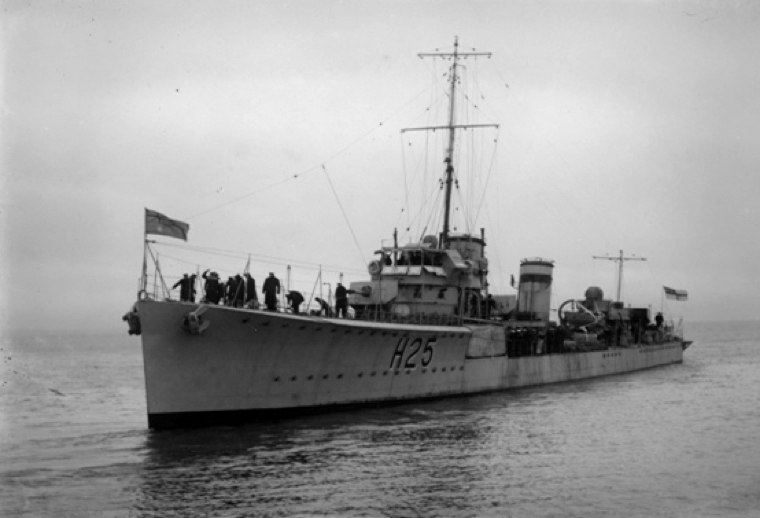
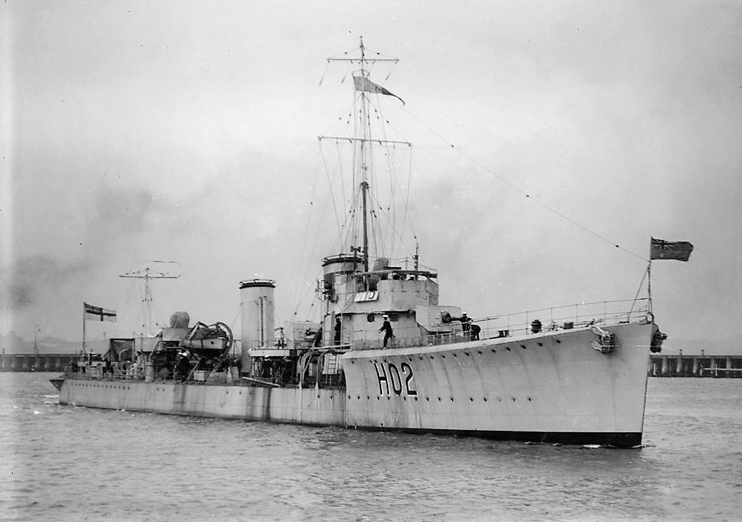
During that decade Paul was also appointed as The First Lieutenant at HMAS Cerberus, a tough assignment for any Naval Officer.
In 1931, with the world at peace, Paul decided to resign his commission and return to the family home in Carrick, Tasmania. When War raised its ugly head again late in the 1930s, he offered to re-join in July 1939 as a member of the Emergency List and was accepted with the rank of Lieutenant Commander. Following service at Cerberus, then Warrego and Brisbane, Paul was appointed to commission HMAS Toowoomba in October 1941. This appointment being further recognition of the esteem in which he was held by his superiors.
Toowoomba at War 1941/1942
Soon after her commissioning late 1941, Toowoomba entered operational service. She was based in Sydney initially, tasked with convoy escort duties along the east coast of Australia until January 1942, when she was ordered to Batavia. Toowoomba was in constant action over the next two months and on 14 February was one of the last ships to enter Singapore Harbour before the Island was captured by the Japanese. Toowoomba’s sailing orders for each of her assignments in 1942 were issued under the hand of Commodore Collins RAN.
Following the outbreak of war with Japan, Captain John Collins was appointed Commodore Commanding China Force, based in Batavia, Dutch East Indies. HMAS Toowoomba under the command of Paul Hirst was stationed in the Dutch East India area early 1942, so throughout that period, Commodore Collins was Paul’s senior officer and as such his reporting officer
During what must have been a quite insane period in the Dutch East Indies early in 1942, Toowoomba was ‘dive bombed’ many times, surviving, it seems, only by the magnificent seamanship of her Captain. Toowoomba’s crew paid tribute to Paul with Signalman Fraser remembering Paul as a ‘Bonzer bloke and a terrific skipper’.[iv]
Toowoomba’s assignments in the Tanjong Priok and Tjilatjap areas kept her extremely busy and Tjilatjap became a regular stop off for refuelling. Hirst decided it would be prudent always to track close inshore when escorting convoys and when leading his corvettes.
Early 1942 the RAN decided that as Collins and his staff could not be well protected in Batavia, the office was to be moved to Fremantle,
Early on the morning of 2 March Collins, stationed at the time at Tjilatjap was doing his utmost to find shipboard accommodation for as many as possible in the transfer of his quarters and staff to Fremantle to take up the position as Commodore Commanding Fremantle and Senior Naval Officer, Western Australia
To his delight, over the horizon came Paul Hirst in Toowoomba and the other corvettes he was leading. Collins would have found them a god-send; as they made possible the evacuation of all personnel.
Soon after that evacuation, Toowoomba was ordered back to Fremantle and then commenced routine patrols off the Western Australian Coast. During her last patrol, she encountered heavy seas and suffered major damage to her upper deck structures and sonar and was forced to return to Fremantle. Shortly before arrival, a signal was received in Toowoomba informing Paul that he was to be promoted Commander and that he was to take four corvettes, including Toowoomba to join the British Eastern Fleet. The whole crew were delighted in the announcement.
Damaged Toowoomba arrived in Fremantle on Saturday 19th July 1942.
The Fremantle Meeting
Paul’s naval career ended effectively one week after Toowoomba’s return to Fremantle on Saturday 19 July 1942.
On arrival in Fremantle, I think it fair to assume that Commodore John Collins inspected the damage to Toowoomba[v] and that Paul paid a visit to Senior Officer Western Australia Commodore Collins to further explain the structural damages to Toowoomba and to seek time to affect the required repairs. There are no written records extant of either Paul’s visit to John Collins or John Collins’ visit to Toowoomba. The Naval Board were in Melbourne and would not have visited the ship.
I do not say that Collins suggested to Hirst, ‘resign’, as there is no corroborating evidence such an exchange occurred. What we do know is that Hirst told his ship’s company he had resigned.
What I am suggesting is that there may well be several other parts to this section of the story. In particular I have little doubt that Commodore Collins took in Paul’s explanation of the repairs considered essential before Toowoomba could return to War Time duty anywhere. I think it is fair to assume, Commodore Collins, at this time, was (nearly) out on his feet following those hectic days in Singapore, Tanjong Priok and Tjilatjap when all that he was concerned about was the safety of his staff and the prosecution of Australia’s wartime commitments in the region.
There could be only one winner in the apparent disagreement between Paul and Commodore Collins over Toowoomba’s seaworthiness.
Vice Admiral Jones makes a most salient point. “The date was 1942, however Paul’s principled stand then resonates today where there is much greater appreciation on ensuring the material condition of ships ‘ship safe’ regime”.[vi] So I remain bemused that Collins and the Naval Board (apparently) dismissed Hirst’s caution out of hand.
Despite Collins having been closely associated with Hirst’s promotion to Commander and Hirst’s exemplary wartime record in the Dutch East Indies in 1942, Paul would no doubt have given serious consideration to all Collins had to say before he (Hirst) decided ‘Resignation it must be’.
Both men were true gentlemen, outstanding Naval Officers and leaders (particularly in the case of Commodore Collins) and each would have known what the outcome of their disagreement had to be. First and foremost though was that Australia’s Naval Activities in the Dutch East Indies and also in Australian waters would take precedence over personal friendships. Paul would have understood this clearly.
Paul then returned to Toowoomba keeping much to himself until the following day. At an appropriate time, he assembled the ship’s company on Fremantle wharf, advised them of his meeting with The Senior Officer Western Australia, Commodore Collins, and told the crew (words to the effect) – “I’ve decided to resign my Commission. I will be returning to my family in Tasmania. You have been an amazing crew. I wish you well for the future”.[vii] On Paul’s departure, a period of considerable gloom settled over Toowoomba.
The Aftermath
Repairs to Toowoomba were not affected until November 1942. Yes, a new Commanding Officer was appointed shortly after Hirst’s resignation, but the original crew remained aboard until Toowoomba arrived in Adelaide for docking and repair.
The obvious question as far as I am concerned: ‘Why did Paul Hirst feel compelled to resign IF the repairs to Toowoomba were essential and arranged to be completed in Adelaide soon after his resignation’?
On arrival Adelaide, Toowoomba was docked for repairs and her original crew (including all officers) were reassigned (posting notes and appointments) far and wide within the RAN.
Clearly, the Naval Board wanted a lid put on the whole incident. On 22 November 1942 Toowoomba was assigned to duty to the British Eastern Fleet involved in escort and patrol duties across the Indian Ocean reaching as far west as the Persian Gulf operating with the fleet until returning to Fremantle on 3 December 1944 for refit. That refit was completed in March 1945, and Toowoomba joined the British Pacific Fleet, assigned to escort and patrol duties between Australia and New Guinea until the end of hostilities.
Following the end of World War II, Toowoomba spent time in Hong Kong, performing minesweeping and hydrological survey duties; returning to Australia in December 1945. The corvette earned two battle honours for her wartime service, “Pacific 1942” and “Indian Ocean 1942–44”.
Following his resignation, Paul returned to his beloved Tasmania. However, he was not done with service in our Armed Forces. In September 1945 he volunteered for duty as a Captain with the Australian Army and was appointed Master of Craft with the Army’s water transport corps. Paul’s appointment in the Army was terminated (at his request) in January 1947. He then returned to farming in Tasmania. His wife Evelyn passed away in 1963 and Paul was laid to rest in Carrick Church Cemetery, Tasmania, in 1973.
Shipmates attending Paul’s funeral in 1973 at Low Head, Tasmania, recalled: ‘Digger had an uncanny ability to avoid the bombs from Japanese aircraft’. Norm Smith, another shipmate, wrote, Paul Hirst ‘had brought the ship through several close encounters with the enemy of the time so I and 80 or so others revere his memory in perpetuity’.[viii] Vale
HMAS Toowoomba (1)
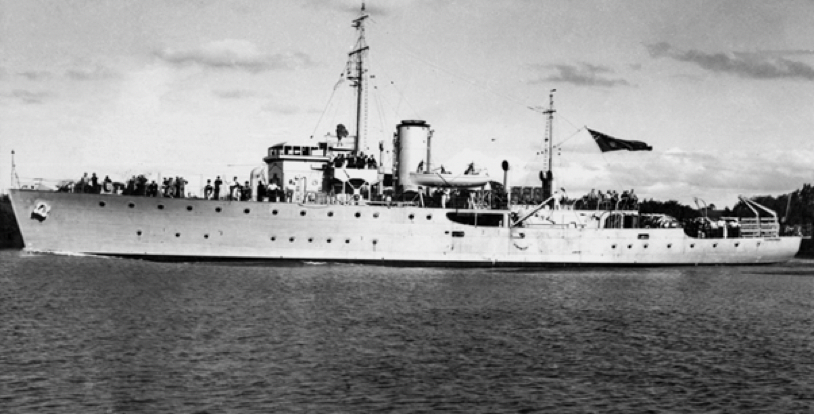
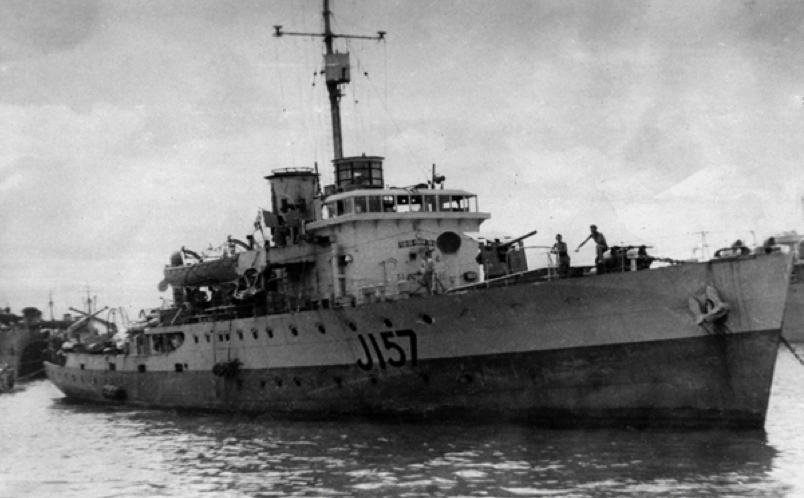
March 1942
| Namesake: | City of Toowoomba, Queensland
|
| Builder: | Walkers Limited in Maryborough, Queensland
|
| Laid down: | 6 August 1940
|
| Launched: | 26 March 1941
|
| Commissioned: | 9 October 1941
|
| Decommissioned: | 5 July 1946
|
| Motto: | “Fearless”
|
| Honours and awards: | Battle honours:
• Pacific 1942 • Indian Ocean 1942–44
|
| Fate: | Transferred to Royal Netherlands Navy |
Acknowledgements
Vice Admiral Peter Jones AO DSC RAN (Ret’d); Mr John Perryman Sea Power Centre, Canberra ACT; National Archives of Australia; Signalman Donald Fraser and his family; The Australian War Memorial; The Hirst Family (Tasmania and Toowoomba QLD); Historical Societies of Hobart Tasmania and Carrick Tasmania; Dr Ian Pfennigwerth [Captain RAN Ret’d] and The Royal Australian Navy.
References
[i] Undated letter from Able Seaman Donald Fraser – commissioning signalman HMAS Toowoomba.
[ii] Australia’s Argonauts, Vice Admiral Peter Jones AO DSC RAN (Ret’d), Echo Books, West Geelong 2016. Pp428.
[iii] Vice Admiral Sir William Rooke Creswell RAN.
[iv] Royal Australian Navy papers 1911.
[v] Vice Admiral Sir William Rooke Creswell RAN.
[vi] Australia’s Argonauts, Vice Admiral Peter Jones AO DSC RAN (Ret’d), Echo Books, West Geeelong 2016. Pp. 17.
[vii] Australia’s Argonauts, Vice Admiral Peter Jones AO DSC RAN (Ret’d), Echo Books, West Geeelong 2016. Preface.
[viii] Australia’s Argonauts, Vice Admiral Peter Jones AO DSC RAN (Ret’d), Echo Books, West Geeelong 2016. Pp19
[ix] Royal Australian Navy papers 1911.
[x] Australia’s Argonauts, Vice Admiral Peter Jones AO DSC RAN (Ret’d), Echo Books, West Geeelong 2016. Pp. 640.
[xi] Paul Hirst’s personal papers.
[xii] Australia’s Argonauts, Vice Admiral Peter Jones AO DSC RAN (Ret’d), Echo Books, West Geeelong 2016. Pp. 428.
[xiii] Personal communication Vice Admiral Peter Jones AO DSC RAN (Ret’d).
[xiv] Signalman Fraser interview by Vice Admiral Peter Jones AO DSC RAN (Ret’d) for Australia’s Argonauts).
[xv] Australia’s Argonauts, Vice Admiral Peter Jones AO DSC RAN (Ret’d), Echo Books, West Geeelong 2016. Pp. 636.




